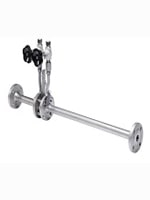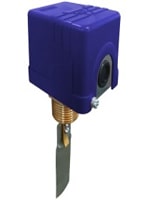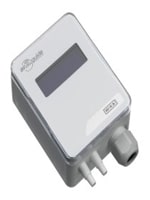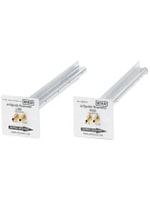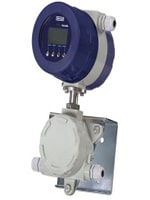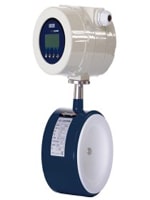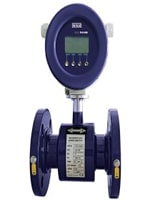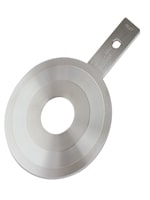
Primary flow elements
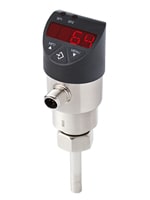
Flow switches
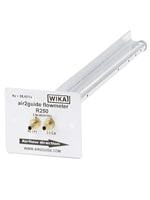
Air flow sensors
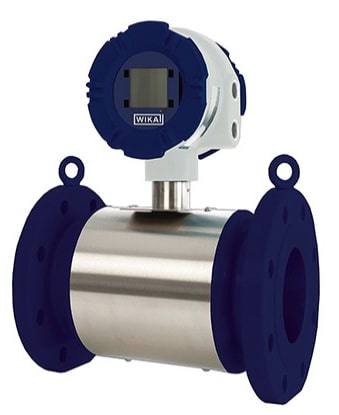
Ultrasonic flow meters
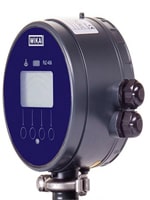
Magnetic-inductive flow meters
Primary flow elements
Primary flow elements for special requirements
Orifice plates, meter runs, flow and Venturi nozzles, Venturi tubes, pitot tubes and restriction orifices are part of our portfolio of primary flow elements. All our primary flow elements are designed in accordance with the principles and requirements of international standards (ISO 5167/ISO TR 15377, ASME MFC, ASME PTC6, BS 1042, DIN 19206, UNI 10023). We offer calibration certificates in accordance with the ASME PTC6, ISPESL and IBR standards. With our extensive product range we are in a position to cover almost all industrial applications. Customised solutions can be developed to meet your specific needs.
Models FLC-OP, FLC-FL, FLC-AC
Easy installation and handling
Differential pressure flow meters are used in many technical applications. As primary flow elements, orifice plates represent the most common solution. Orifice plates are notable for their easy installation and management.
The differential pressure generated by the primary flow element is normally transformed into an electrical signal proportional to the flow rate by a differential pressure transmitter.
Applications of the orifice plate, flange and annular chamber
Power generation
Oil production and refining
Water treatment and distribution
Gas processing and transmission
Chemical and petrochemical industry
Special Features of the orifice plate, flange and annular chamber
Max. operating temperature and pressure limited by material and flange
Suitable for liquid, gas and steam flow measurement
Accuracy ≤ ±0.5 % of actual flow rate
Repeatability of measurement of 0.1 %
Model FLC-MR
High accuracy
Differential pressure flow meters are used in many industrial applications. If a high measurement accuracy is requested, the best solution for primary elements is a meter tube.
A meter run or meter tube is an assembly consisting of an orifice plate with flanges and calibrated upstream and downstream pipes. Since the meter tube is manufactured as one unit, it is possible to optimally match all components with each other. Thus any faults that might lead to measuring inaccuracies can be avoided.
Applications of the meter run / meter tube
Power generation
Oil production and refining
Water treatment and distribution
Gas processing and transmission
Chemical and petrochemical industries
Special Features of the meter run / meter tube
Max. operating temperature and pressure limited by material and rating
Suitable for liquid, gas and steam flow measurement
Accuracy ≤ ±1.0 % of actual flow rate
Repeatability of measurement 0.1 %
Flow switches
For each flow measurement the right flow switch
Flow switches are used for the display and monitoring of the flow of liquid and gaseous media. The instruments feature a high switching accuracy and functional safety, low switch hysteresis and continuous switch point setting by the user.
Model FSM-6100
The model FSM-6100 electromechanical flow switch is designed for the detection of interrupted flow (“no flow”) of water and other non-corrosive liquids in industrial coolers, heaters or other industrial pipelines.
The flow switch signal is used for operational controls that prevent system failure, e.g. due to ice formation in the absence of cooling water flow.
Applications
Heating, cooling, air-conditioning and water treatment plants
Pumps and dosing systems
Operational controls to prevent system failures in the absence of supply of water or liquid
Special features
Switch point repeatability of ±0.5 % for reliable switching
High-quality bellows and microswitch for a service life of > 500,000 cycles
Rigid paddles from stainless steel to withstand pressure surges and high medium temperatures
Model FSD-4
The model FSD-4 electronic flow switch offers full flexibility in monitoring and controlling flow based on the velocities of liquid media. The switch points of the model FSD-4 can be freely configured very easily via the 3-button operation directly on the instrument or optionally via IO-Link. The model FSD-4 can output both absolute values in various units and relative flow values and display them on the digital indicator.
Applications
Control of cooling lubricant systems
Monitoring of coolant circuits
Control of filter units
Dry run protection in pumps
Special features
Wear-free flow monitoring of liquid media using them calorimetric principle
Flexibly configurable switching and analogue outputs for flow and temperature
Easily parameterisable via 3-button operation or optionally via IO-Link 1.1
Exact adaptation to the conditions on-site
Air flow sensors
Precise air flow sensors and air flow meters from WIKA
Air flow sensors and air flow meters are suitable for the measurement and control of air flows in ventilation and air-conditioning. Air flow sensors are easy to install and measure the total pressure, the static pressure of the air flow and the average air velocity. In combination with the model A2G-100 PID controller, the user has efficient volume flow control of the ventilation or air-conditioning system.
The air flow meters of the model A2G-25 determine the volume flow using a configurable fan constant (K factor) for all common manufacturers. The electrical output signals of 0…10 V or 4 … 20 mA can be selected directly in the instrument using jumpers.
Model A2G-25
The model A2G-25 air flow meter is used for measuring air flows of gaseous media in ventilation and air-conditioning applications.
The air flow is measured by determining the differential pressure and multiplying it with the K factor. The K factor depends on the ventilator used or, when using pipe/duct measuring probes, on the size and number of probes and is easy and fast to enter in the menu. The different calculation formulas for the air flow are already programmed in the menu of the A2G-25. By choosing the respective radial ventilator manufacturer, the correct formula is automatically taken into account in the calculation.
Applications
For measuring the air flows of radial ventilators
For measuring air flows in ventilation pipes and ducts in conjunction with the model A2G-FM measuring probe
Measurement of differential pressures
Special features
With analogue output signal (0 … 10 V or 4 … 20 mA) or MODBUS® protocol
Output signal for air flow and differential pressure in one instrument
Simple and fast mounting and commissioning
Maintenance-free
Maximum operating pressure 20 kPa
Model A2G-FM
The model A2G-FM measuring probe measures air velocities and air flows in ventilation and air-conditioning systems. The intelligent design makes for a very easy installation in existing ventilation pipes and ducts.
Applications
Air flow measurement in circular ventilation pipes
Air flow measurement in rectangular ventilation ducts
Special features
Multipoint-point measurement for averaging to ensure a high accuracy
Suitable for low air velocities down to 1 m/s
Very easy to install
Available in two versions
– For circular ventilation pipes (version R)
– For rectangular ventilation ducts (version L)
Ultrasonic flow meters
Ultrasonic flow meters for accurate gas flow measurement
In-line ultrasonic flow meters provide accurate gas flow measurement by calculating the transit time difference ratios between ultrasonic paths into a pipe. WIKA ultrasonic flow meters are intrinsically safe (ATEX/IECEx) and approved for custody transfer (MID 2014/32/EU, OIML R137). These solutions ensure low power consumption and easy and quick installation and commissioning, and are suitable even in the most demanding applications. Sound velocity, signal-to-noise ratio and other additional measured variables are available for condition monitoring, as well as connectable pressure and temperature sensors for achieving integrated volume conversion.
Model FLC-UFL
By calculating velocity ratios between two or more ultrasonic paths, the simply constructed model FLC-UFL ultrasonic flow meter provides reliable gas flow measurement. Additional measured variables, such as sound velocity, signal-to-noise ratio or signal strength, are available for condition monitoring. For applications requiring integrated volume conversion, pressure and temperature sensors can be connected.
Applications
Industrial gases
Oil and gas
Petrochemical industry
Power supply
Process industry
Special features
Patented broadband continuous-wave technology
Simultaneous transmission on two or more paths
No pressure drop and no wear parts
Intrinsically safe design
Approved for custody transfer (MID MI-001, OIML R137-1 and -2)
Magnetic-inductive flow meters
Magnetic-inductive flow meters for accurate conductive liquids measurement
WIKA magnetic-inductive flow meters provide precise measurements of conductive liquids offering many important advantages compared to other technologies, such as exceptional long-term stability, maximum process reliability, no pressure drop and zero maintenance. WIKA magnetic-inductive sensors are available in different versions in terms of body and lining materials, pipe connections and applications (from economical solution for irrigation up to highly accurate custody transfer as per MID MI-001, OIML R49). They can be coupled to WIKA digital signal converters, supplied in compact and separated configurations, able to deliver accurate flow measurement and manage communication with the external control systems, even in absence of power supply. With no moving or intrusive parts these WIKA instruments ensure fast response time and ease of installation.
Model FLC-406
The model FLC-406 is a battery-powered signal converter which is perfectly suited for applications without access to mains supply. A battery life of up to 10 years enables maintenance-free and economical operation.
The model FLC-406 can be combined with all magnetic-inductive
flow meters from WIKA. With the model FLC-2300 flow meters, even low flow velocities from 0.015 m/s can be measured without problems.
Applications
Water and wastewater
Water treatment and distribution
Leakage detection systems
Applications without access to the power supply network
Water revenue and bulk metering
Special features
Approved for custody transfer (MID MI-001, OIML R49)
Available as a compact or separated version
Battery-powered (standard), DC 12 … 24 V (optional)
Module for pressure and temperature readout available
Model FLC-608
Versatile in application
The model FLC-608 hybrid signal converter is available in many versions and can also be used in remote applications that do not have access to the power supply network.
Applications
Water and wastewater
Chemical industry
Pulp and paper industry
Leakage detection systems
Applications without access to the power supply network
Special features
Power supply via power supply network, battery, power supply network and battery or solar panel
HART® protocol and module for pressure and temperature readout available
Model FLC-1000EL
Magnetic-inductive flow meters are based on the Faraday principle, by which a conductor which traverses a magnetic field generates a potential oriented perpendicular to that field. The flow tube is enclosed by two flanges and also by two coils. The magnetic field which is generated by the electric current running through the coils induces a potential difference in the electrodes that is proportional to the flow being measured.
Applications
Water cycle
Process applications
Special features
Easy and time-saving installation
Excellent price-performance ratio
Electrodes from titanium, tantalum or platinum
Model FLC-2200EL
Magnetic-inductive flow meters are based on the Faraday principle, by which a conductor which traverses a magnetic field generates a potential oriented perpendicular to that field. The flow tube is enclosed by two flanges and also by two coils. The magnetic field which is generated by the electric current running through the coils induces a potential difference in the electrodes that is proportional to the flow being measured.
Applications
Water meters
Water and wastewater
Process industry
Industrial process liquids and slurries
Mining and pumps
Special features
Supplied empty-pipe electrode for diameter ≥ DN 50
Integrated pressure port (on request)
Internal wet calibration for diameter ≤ DN 2000
Approved for custody transfer (MID MI-001, OIML R49)



